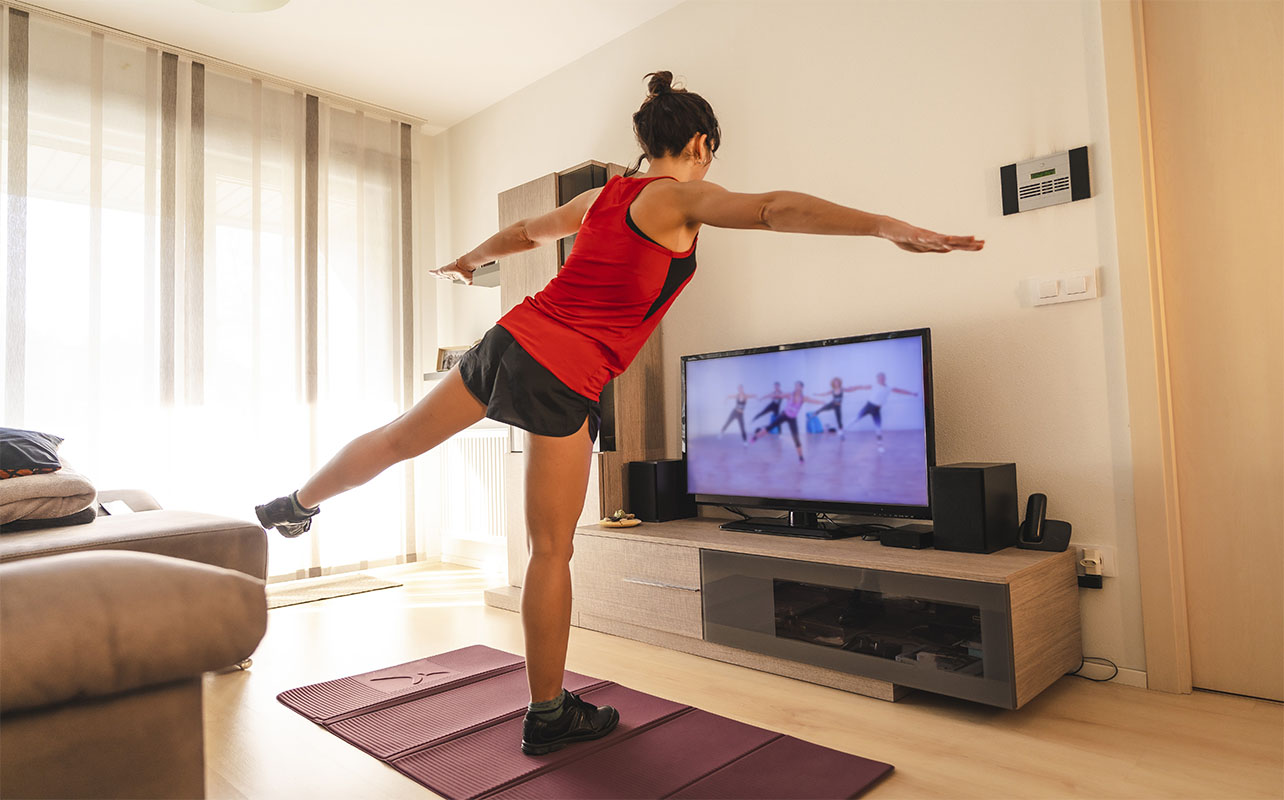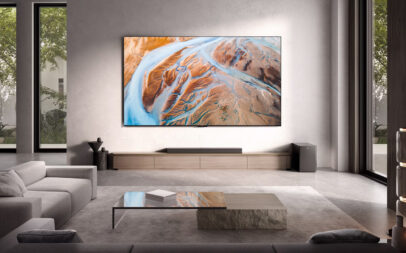
With so many TV screen sizes out there, it’s easy to wonder: What’s the best size of TV for my living room? Will a 55-inch screen overwhelm my bedroom? Is 85 inches too much for my family room? The answers depend on two main things: how far you sit from the screen and the size of your room. These factors impact your viewing experience. Too small, and you might find yourself squinting. Too big, and you find yourself twisting your neck to every corner to keep up with the action.
Getting the right size of television for your room makes a huge difference. With this TV size guide, you’ll know exactly what to look for when choosing the TV size that’s right for you.
Understanding viewing distance and TV size
The easiest and most effective way to figure out the right TV size is by calculating your viewing distance—that’s the space between where you sit and where your TV is placed. Here’s a simple formula: take the distance (in inches) between your seating area and the screen, then divide it by two. The result is your recommended screen size in inches.
For example, if your couch is 10 feet away from the wall where you plan to place your TV, that’s 120 inches. Divide that by two, and you land on 60. That means a 60-inch screen is just about perfect for that distance. Want a bit more screen without losing clarity? Sure, you can safely go a bit larger, especially if your TV has a higher resolution. However, if you go significantly larger than a 60-inch screen, you may start to notice pixelation and lose some visual detail.
Speaking of resolution, that’s the next factor to consider. Many TVs sold in Canada today are 4K, and some are even 8K. The higher the resolution, the more pixels there are on the screen, which means you can sit closer without noticing any graininess or pixelation. With a 4K or 8K TV, you can comfortably go bigger without sacrificing image quality, even in a moderately sized room. That’s great news if you’ve been eyeing a larger screen but weren’t sure your space could handle it.

Looking for the TV that’s perfect for you?
Check out our blog on how to choose the right TV for you to find the suitable fit for your space, habits, and budget.
Recommended TV sizes for different rooms
One size doesn’t fit all when it comes to TV screens. For example, the ideal TV size for a compact condo bedroom isn’t going to be the same as what works in a spacious, open-concept suburban living room. So, let’s look at what that means for different rooms in your home.
Living room: 55″ – 75″ TVs
The living room is often the entertainment centre of the home, which makes it the perfect place for a larger screen. If your seating area is set back a good distance, say anywhere between 8 to 12 feet, you’re in prime territory for TVs within this range. Some people even go up to 85 inches if the room is spacious enough and the resolution is high. A 4K screen makes all the difference here, giving you a cinematic experience without sacrificing clarity. This range is considered the best size of TV for a living room as it balances immersion with comfort, especially when you’re watching sports, streaming movies, or just catching up on the news.
Family room: 50″ – 70″ TVs
The family room is where most of the daily action happens—movie nights, video games, background noise during dinner prep. It’s a dynamic space that deserves a versatile TV. If your seating is more compact or the room doubles as a play area, you might lean toward the lower end of that range. But if it’s where your family gathers to watch shows together, something closer to 65 inches or 70 inches will create a more immersive experience. Again, higher resolution lets you go bigger without needing to push your couch back to the next postal code.
Bedroom: 32″ – 50″ TVs
When it comes to choosing the right TV size for your bedroom, the goal is comfort and relaxation. A 43-inch screen is one of the most popular choices for bedrooms across Canada; it’s compact, affordable, and easy on the eyes while still delivering a great picture. If you plan to mount the TV on the wall, you’ll also save space and get a better viewing angle while lying in bed. Consider how much room you have and how far you like to sit or lie from the screen.
Additional factors to consider
Of course, size and distance aren’t the only things that affect your viewing experience. A few other factors can make a big difference in how your TV looks and feels in a room.

Viewing angle
This is one of the most overlooked. Your TV will look its best when viewed straight on at eye level. Mounting your TV too high—like over a fireplace mantel—can cause neck strain and degrade the picture depending on the type of screen. To solve this, look for tilting or swivelling wall mounts that let you adjust the angle, especially if you’re watching from a low position like a bed or sofa.
Consider the seating arrangement that works for all viewers. Your couch or chairs should face the screen head-on to give everyone in the room a clear, comfortable view. If your space has multiple seating areas, like a sectional that wraps around the room, a swivel TV mount or angled TV stand can help direct the screen toward different spots, so no one’s stuck watching from an awkward angle.
When considering the viewing angle, think of it like setting the stage: the goal is to make sure no one has to crane their neck, squint from the sidelines, or fight over the “good seat”. A well-thought-out layout helps everyone enjoy the show, no matter where they’re sitting.
Room lighting
Ambient lighting can make or break your viewing experience. If your space gets a lot of natural light, you may run into glare issues—especially with windows or overhead lights reflecting off the screen. To reduce glare, try positioning your TV away from direct sunlight and use blackout or light-filtering curtains. Placing the screen perpendicular to windows can also help. It’s a simple change that can make a big difference.
For brighter rooms like living areas or open-concept spaces, TVs with anti-reflective screens or ambient light sensors are a smart choice. OLED and QLED models generally handle glare better than basic LED TVs, offering deeper contrast and better brightness control. A tilting or swivel mount can also help you adjust the screen to avoid reflections at different times of day.
How to choose the right TV for you
So, what’s the verdict? The best size of television for your room depends on how far you’ll be sitting from the screen, the layout and lighting of your space, and your personal viewing habits. A 60-inch TV might be perfect for one living room, while a 43-inch screen is ideal for someone else’s bedroom. That’s why it’s important to consider not just what fits, but what feels right.
If you’re shopping for the best size of TV for a living room, aim for something between 55 and 75 inches based on your space. For a cozy family room, 50 to 70 inches is a safe bet. And if you’re upgrading your bedroom setup, a screen in the 32 to 50-inch range will likely do the trick. Ultimately, finding the right size of TV for viewing distance is about creating an experience that’s comfortable, immersive, and enjoyable.
Ready to shop for the perfect TV for your room? Explore the different TV sizes available at Best Buy Canada.
This article was drafted using AI technology and then reviewed, fact-checked, and revised by a member of our editorial team.





